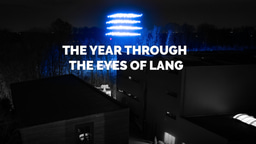Properly Using the EPR Formula
Hello all!
I was wondering if someone could help me grasp some concepts here. Recently I've been trying to further my knowledge of properly spec'ing power amps for speakers with the EPR formula instead of using "rule of thumb" principles.
For my test case, I used the following variables:
Lp = 98
H = 20
Ls = 96
D2= 30
Dr = 3.28 (coverted to ft)
Wref = 1
When I do the formula, I get an answer of 13213 Watts.
The speaker using data for is has an AES power rating of 300W, peak rating of 1200W.
First .....am I correct?
Second...if I am correct that seems like extreme overkill. Would anyone spec an amplifier that big for a speaker so small? I would think one could turn down the sensitivity of the amp to get below the peak rating of the speaker, but to me it seems a bit much.
Thanks in advance.
Latest Content
2025 Review – The Year Through The Eyes Of LANG






Please sign in or register for FREE
If you are a registered user on AVIXA Xchange, please sign in
Hi @Chad Silvey, thanks for posing your question. I'm looping @Greg Bronson CTS-D in who has shared information on the EPR formula in the past: CTS-D Exam Guide (2nd Ed) Errata | AVIXA Xchange
Hi Chad,
Using your test case variables (metric equivalents for distances) I get 13,243. Yes, it's a big number (as is the 98 dB SPL at listener position). From what I'm aware of, the 20 dB headroom for music (and 10 dB headroom for speech) recommendation goes back some time ... and have seen occasional debate(s) on justification thereof. In my opinion the spirit is to minimize any potential of amplifier clipping/distortion - but just how much (headroom) also depends on the content/application so "mileage may vary". Also noting loudspeaker sensitivity impact on result.
Lisa/Greg,
Thanks for you reply and confirmation. Just for a little context, I mostly work on contemporary house of worship spaces of all shapes and sizes.
When I adjust the headroom in the formula I can get to around 6-10db of headroom and achieve a similar wattage of what I would normally do with a those "rule of thumb" principles.
I understand "mileage may vary" and that every application is a little different. If I were to follow that formula based on any sound system model I've done, I don't think many speakers or budgets would survive. Maybe this formula is more for commerical/lobby spaces and not meant for concert sound?